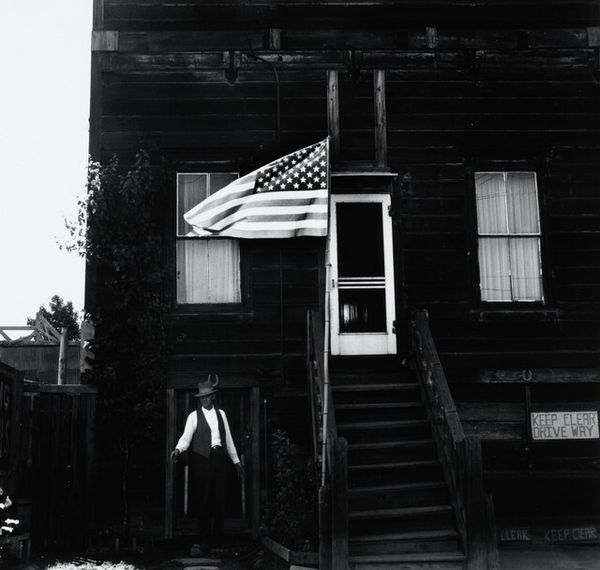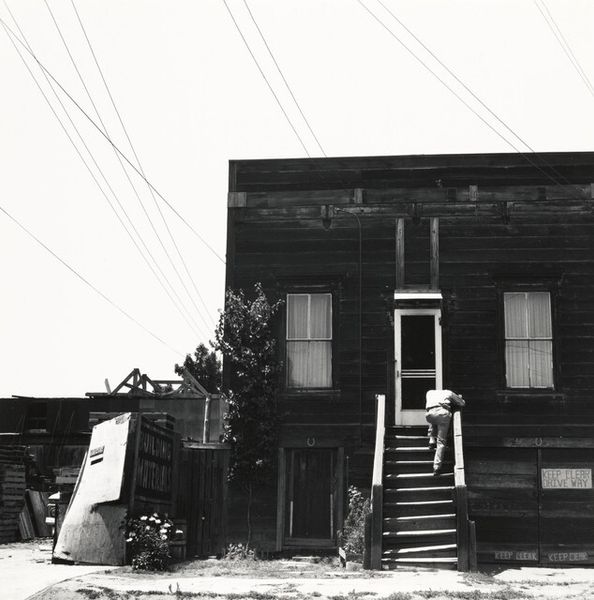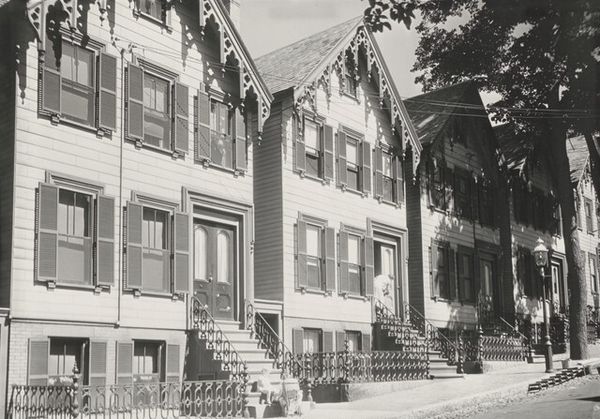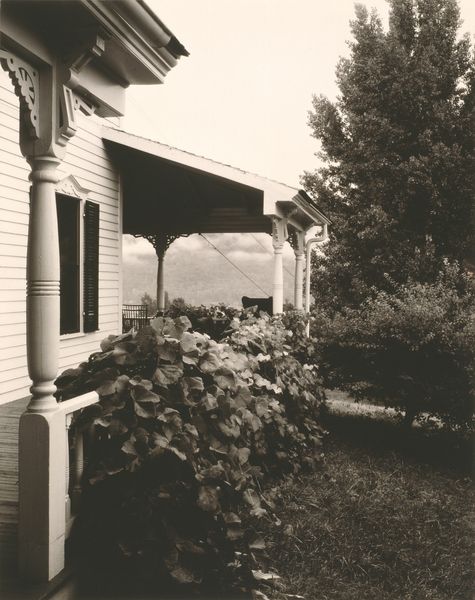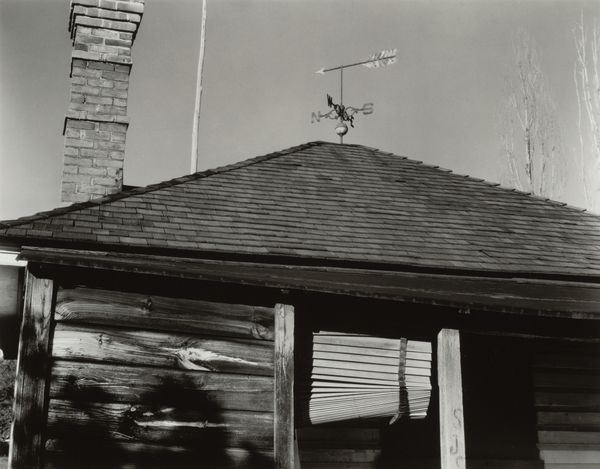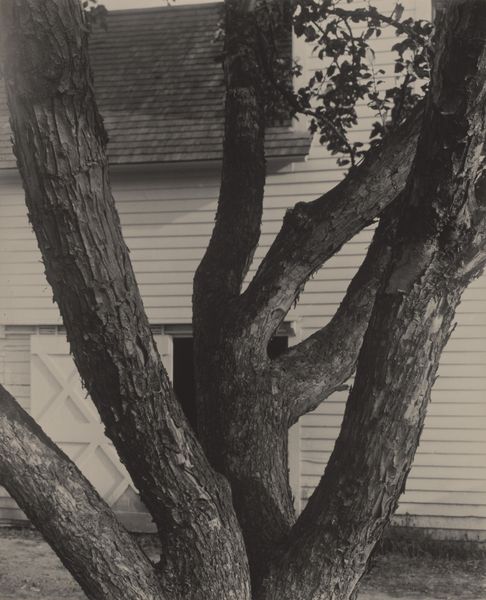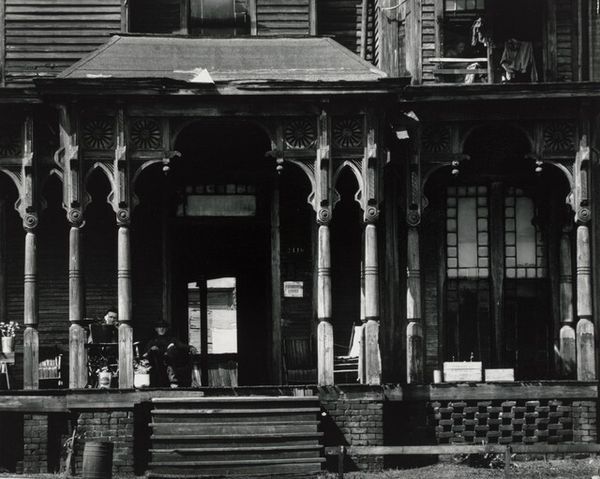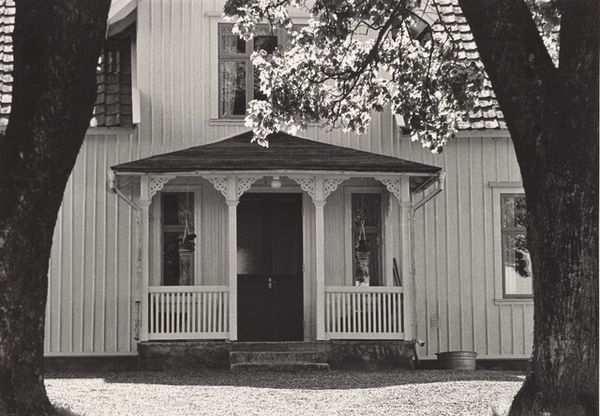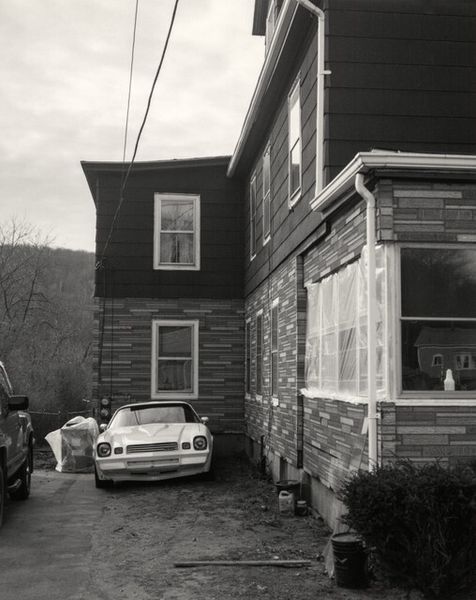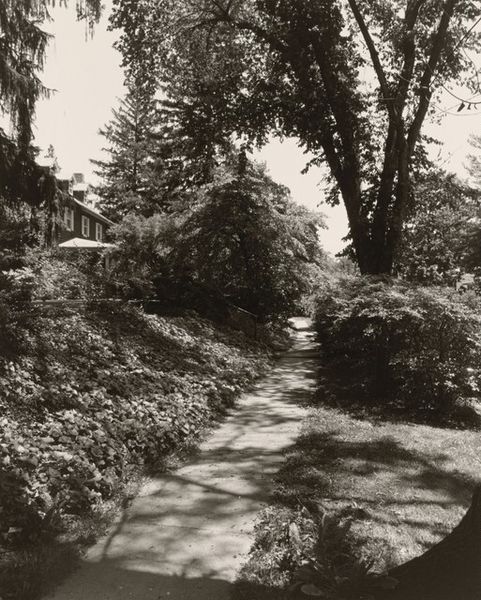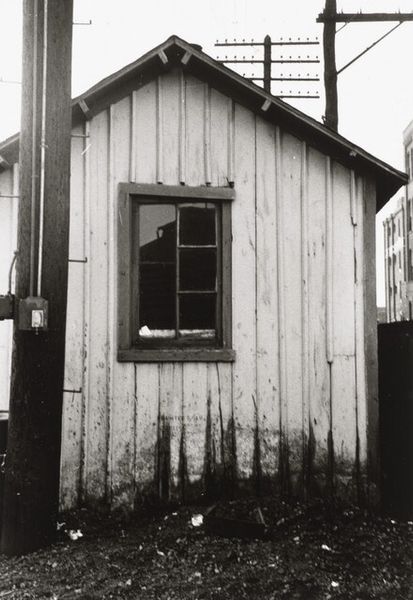
photography
#
landscape
#
street-photography
#
photography
#
cityscape
#
realism
Dimensions: image: 24.5 × 19.7 cm (9 5/8 × 7 3/4 in.) sheet: 25.7 × 20.3 cm (10 1/8 × 8 in.)
Copyright: National Gallery of Art: CC0 1.0
Curator: Here we have Roger Mertin’s "Breckenridge, Colorado," likely taken between 1977 and 1980. It’s a gelatin silver print. Editor: My first impression is one of starkness. It feels almost abandoned, despite being a street scene. The black and white tones really emphasize the angles and textures of the buildings. Curator: It’s a powerful observation. Mertin’s work often explored the intersection of the built environment and the natural world, questioning our relationship with space and place. Looking closer, the textures, the aging wood, the stark shadows evoke the passage of time. Breckenridge as a location would have likely been shifting at this time as tourism developed as its major industry. Editor: And look at how carefully he's framed the natural elements—the young birch trees. There’s an interplay between the rigid geometry of the buildings and the organic forms. You can almost feel the roughness of the weathered wood and the smoothness of the newly exposed pale birch. The way he renders light is also intriguing; you can almost touch it. Curator: It reminds me of Bernd and Hilla Becher's photographs of industrial structures – a focus on objective documentation but with a very distinct aesthetic sensibility that speaks to social structures. This documentary style serves the Becher's commitment to create social commentary through matter-of-fact portrayals. Editor: It definitely feels like an architectural study but is rendered through the handmade, the manual labour and skill embedded in his process. From camera adjustments to darkroom exposure, Mertin controls every stage in the printing process of the photograph. You know this work took some time and intention to craft. The texture of the image itself has so much to offer. Curator: And while rooted in photographic realism, there's an undeniable abstract quality too. The composition is almost disorienting; we are pushed to question the scene that is displayed. Editor: A lasting work. This makes me appreciate the beauty and subtle poetry inherent in the built and grown landscape all around. Curator: It reveals the often-unseen histories etched into the landscapes we inhabit. There is a larger picture that considers how cities change with cultural forces at play.
Comments
No comments
Be the first to comment and join the conversation on the ultimate creative platform.
